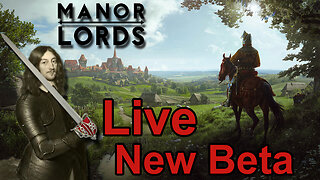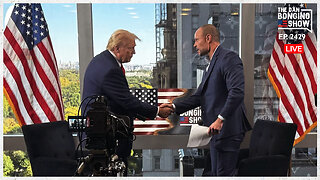Premium Only Content

Field of Glory II: Medieval - Reconquista 01
Episode 01
Field of Glory II: Medieval - Reconquista is a turn-based tactical game set in the High Middle Ages and it's the first DLC for Field of Glory II: Medieval. Developed by the legendary Richard Bodley Scott it brings the best from the tabletop world into the best digital framework.
Feudalism did not have such a dominant impact in Spain and Italy as it had in North West Europe. Both these lands had unique factors which affected the conduct of warfare.
In 1050, more than half of the Iberian peninsula was under the rule of Islamic states, an area known as Andalusia. After the demise of the Umayyad Caliphate in 1031, Andalusia was divided into several small Muslim states, known as the Taifa emirates. The Taifas often fought amongst themselves, leaving them unable to match the larger Christian Kingdom of Castile that was created in 1037 with the absorption of the Kingdom of Leon.
This was the true start of the Christian Reconquista that would not be completed until 1492. To help stem the Christian onslaught, in 1086 the Taifa Emir of Seville invited the Murabit Berbers of North Africa to enter Spain. This did not work as planned for the Taifas, for after defeating the Castilians at the Battle of Sagrajas, the Murabits quickly incorporated most of the Taifa emirates into their empire.
The Murabit empire was taken over in 1147 by a rival Berber sect, the Almohads. These events were a severe setback for the Spanish Christian kingdoms, but they recovered to win a great victory over the Almohads at Las Navas De Tolosa in 1212, which broke the power of the Muslims in Spain forever. Soon only the emirate of Granada was left, but as a vassal of Castile. Throughout the period there was also frequent fighting between states of the same religion, and Muslim and Christian warriors often had few qualms about serving princes of a different religion.
In Northern Italy the big cities had always tried to maintain a degree of independence, and often fought vigorously against the attempts of the Holy Roman Emperor to enforce his authority over them. They grew increasingly wealthy on trade, and by the end of the 11th century their city militias had become the mainstay of Italian armies, eclipsing the role of the feudal knights. In 1176 the northern Italian cities formed the Lombard League, and won a great victory over Emperor Frederick I Barbarossa at the Battle of Legnano.
This was a part of the Wars of the Guelfs and Ghibellines. The Papacy and the Empire had initially quarrelled over who had the right to appoint church officials, this was known as the “Investiture Controversy”. The Ghibellines were those who supported the Holy Roman Emperor, while the Guelfs were the party supporting the Pope. Even though the Investiture Controversy was resolved in 1122, the conflict between the Papacy and the Empire, and the Guelfs and Ghibellines, carried on for hundreds of years.
-
 3:38:54
3:38:54
Gamer_1745
1 month agoNew Beta of Manor Lords Live Game Play!
83 -
 DVR
DVR
The Charlie Kirk Show
1 hour agoWhat Did YOU Do This Week? + German Elections | Sen. Scott, Sacks, McCarthy | 2.24.2025
2.17K -
 LIVE
LIVE
Benny Johnson
2 hours ago🚨 New FBI Deputy Director Dan Bongino Speaking LIVE Right Now After SHOCK Trump, Kash Appointment
12,584 watching -
 52:36
52:36
The Dan Bongino Show
4 hours agoCutesy Time Is Over (Ep. 2429) - 02/24/2025
677K4.89K -
 1:10:46
1:10:46
The Rubin Report
2 hours agoLEAKED: Tense Meeting Details Leaked as MSNBC Lays Off Major Hosts
12.7K19 -

Timcast
3 hours agoDAN BONGINO Named Deputy FBI Director Under Kash Patel, Deep State & Dem IN PANIC | Timcast LIVE
191K69 -
 LIVE
LIVE
Steven Crowder
4 hours ago🔴 Trump Drops a Bombshell: Bongino’s FBI Takeover & Crowder in Germany Exclusive
46,810 watching -
 DVR
DVR
LFA TV
22 hours agoTIME FOR PAYBACK! | LIVE FROM AMERICA 2.24.25 11AM
29.2K5 -
![🔴[LIVE TRADING] Bounce or Bust?! || The MK Show](https://1a-1791.com/video/fwe2/ad/s8/1/c/n/q/f/cnqfy.0kob-small-The-MK-Show-Feb.-24th.jpg) DVR
DVR
Matt Kohrs
15 hours ago🔴[LIVE TRADING] Bounce or Bust?! || The MK Show
55K3 -
 1:03:25
1:03:25
Kyle Fortch
4 hours ago $0.68 earnedRick Barker: Managing & Developing Taylor Swift, Breaking Artists Today & MORE | THE ONE SHEET S1E5
61.1K